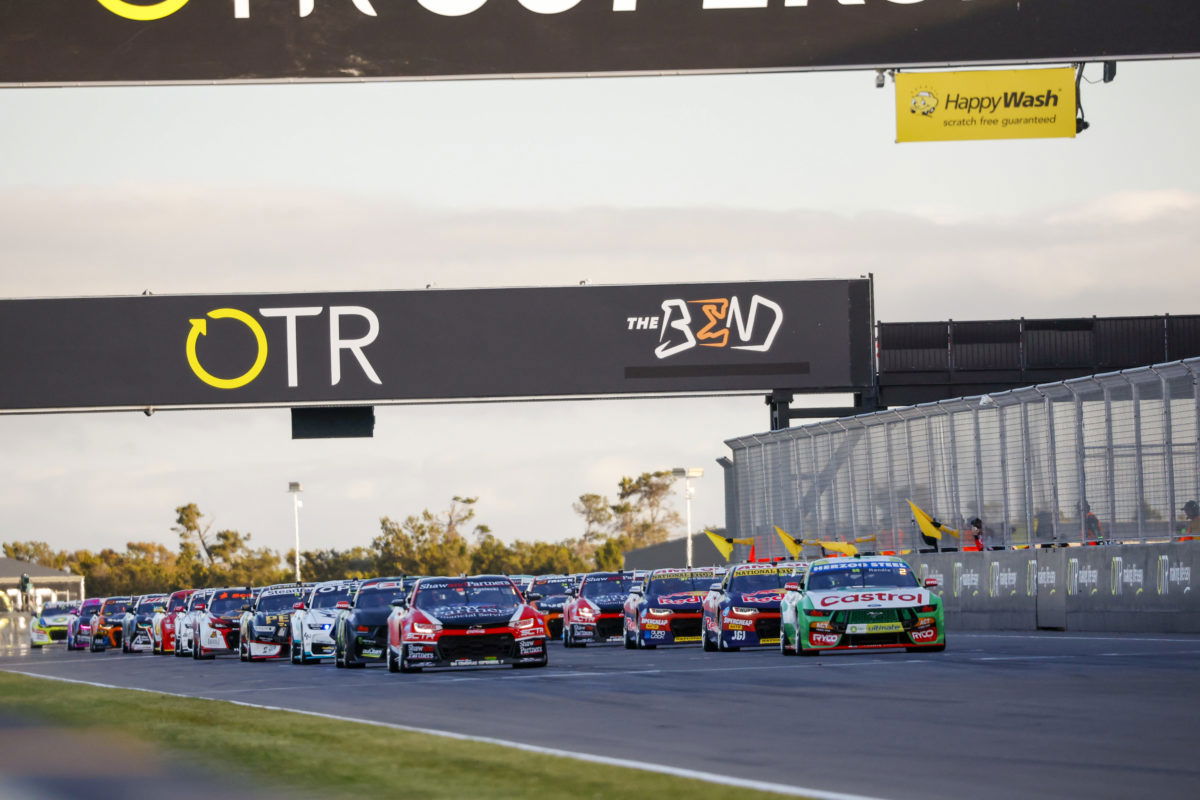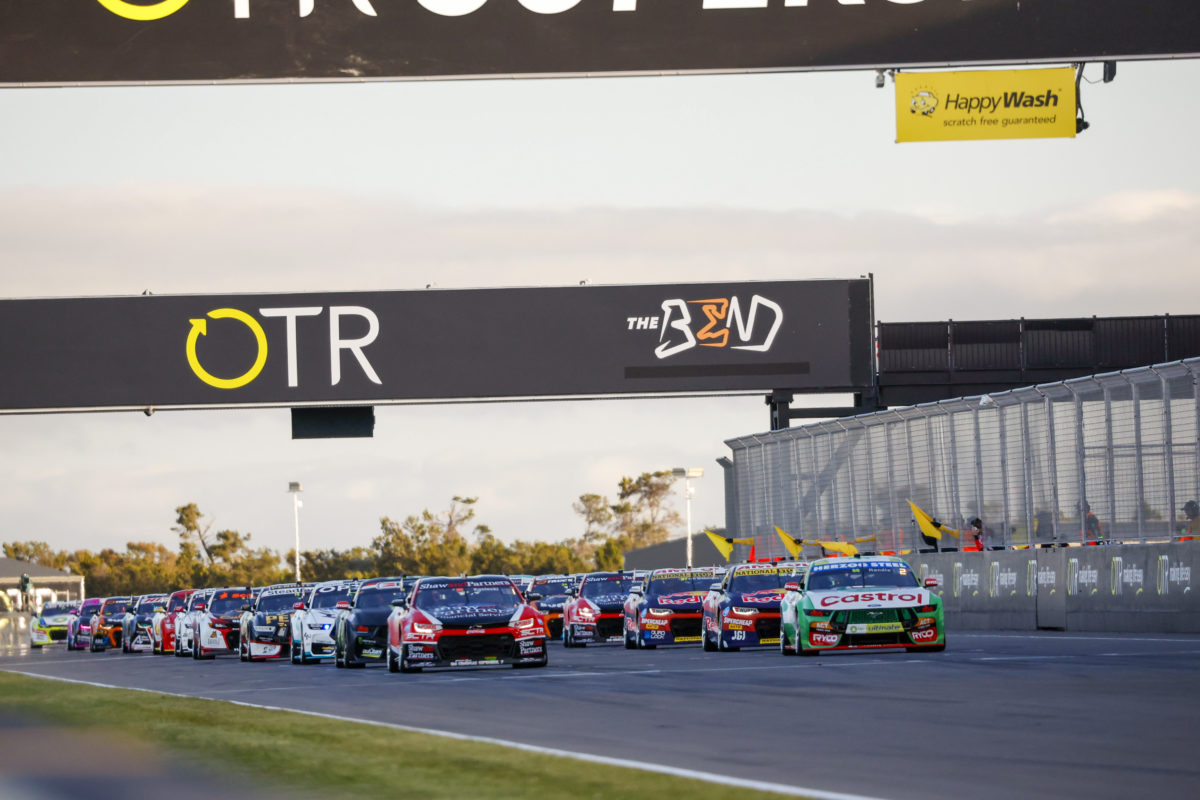

It’s impossible to discuss last weekend at The Bend without, first and foremost, calling out the absolutely sublime performance of Brodie Kostecki.
It wasn’t quite perfect! He was only P2 on the grid for the second race, but two poles and three wins is the sort of weekend performance that places him firmly in the elite. Moreover, given the very narrow window within which the Gen3 cars appear to operate, his consistent superiority should have everyone else looking hard in the mirror.
So, big, thoroughly deserved, congratulations to the most practical and mechanically minded driver on the grid as the Championship heads to the Enduro season.
I believe that the Teams are all acutely aware of the extent to which the Enduro races can affect the Championship outcome this season in comparison with the last three, COVID-affected, years.
Here’s why. DNFs at Enduros in 2023 will be very expensive.
It’s 2019 since there was more than one two-driver race. And last year the sole Enduro, the Bathurst 1000, one of 13 events, represented 7.7 percent of the available points for the season.
The two Enduros this year, as part of a 12-event calendar, will represent 16.7 percent of the available points. Not since the 2019 Championship has the emphasis on the two-driver races been so high. And even then, the risk element was somewhat reduced by the total event maximum points (300) being split across two races at the Gold Coast.
The ever-present pressure on car preparation will be further emphasised by the novelty of running these new Gen3 cars in long races for the first time. Then add in the pressure on co-drivers, all with limited running in the new cars, and both the Sandown 500 and Bathurst 1000 results must be more difficult to predict than at any time in history.
Should make for good viewing.
One issue that did stand out for me from The Bend telecast (apart from the unfortunately increasingly lamentable commentary), was the lack of alternative racing lines available to the cars by comparison with the GT3 cars that we were racing in Japan at the weekend.
This thought brought me back to something that’s been apparent some years. Simply put, the independent rear end of the cars (since 2013) isn’t suited to the spool (locked) differential. Over the last decade, teams developed twin spring packages to assist with overcoming the natural tendency towards terminal understeer that the spool creates.
With the multi-spring set ups being banned, and with almost zero front downforce on the Gen3 cars, I feel that the category needs to urgently consider the introduction of a NASCAR differential.
Xtrac in the UK are the suppliers of both the Supercars transmission and the NASCAR one. The gearbox is basically the same (NASCAR has five speeds rather than six) except that the NASCAR box has a limited slip differential with some adjustability.
GT3 cars use a similar set up. They also have very limited adjustability, but the effect is to give far better ‘turn’ generally. That can create better racing (although GTs often negate that by having way too much downforce for their own good) with more lines available to drivers when in close combat.
The objective of any evaluation of a limited slip differential should be better racing, of course.
I can hear the Teams moaning already about the potential cost. My answer to that is that, whilst the Saturday race at The Bend was reasonably entertaining, the Sunday encounters weren’t, frankly. There is no bigger ‘cost’ to Supercars than boring racing.
The Gen3 cars look and sound superb. But they need to provide better racing than they are to date. They are also proving to be notoriously difficult to optimise.
However, I’m convinced that the category is, with Gen3, only a few steps away from producing some of the best racing ever seen in Australian Touring Cars.
Sort out these brake and steering niggles, in particular, that seem to be affecting everyone to some extent, then put a decent tyre on the car and bolt in the NASCAR differential.
That’s my blueprint for maximising the potential of Gen3. I also suspect that these changes would have a positive effect on the ‘P-word’ issue by creating a wider window where tiny differences in engine or aero performance are less apparent on track.
Interestingly, as I write this, I hear that Supercars may actually be listening to many of us who have been critical of the current tyre and are testing something different at The Bend post event.
If that’s the case, I hope that they take a big picture view and work out how to use less tyres thereby reducing consumption as well as saving the Teams plenty of money on wheels, tyre pressure monitoring system hardware and tyre storage.
Moreover, a really good tyre might remove the need for a minimum pressure rule that would then mean that the category could move on from the non-spectacle of all the cars rolling around nose to tail in a line with over pressured hot tyres at some events.
Taking the power away from the Teams at the end of 2021 was meant to create opportunities for Supercars to make decisions for the good of the Sport rather than just for the short term good of some Teams.
Supercars needs to use the power now vested in them to make decisions to maximise the potential of the product they have.
And, if they’re up for making good decisions, put Greg Murphy in the commentary box with Neil Crompton for the upcoming Endurance Season. Make it an in-joke and giggle-free environment.



















Discussion about this post